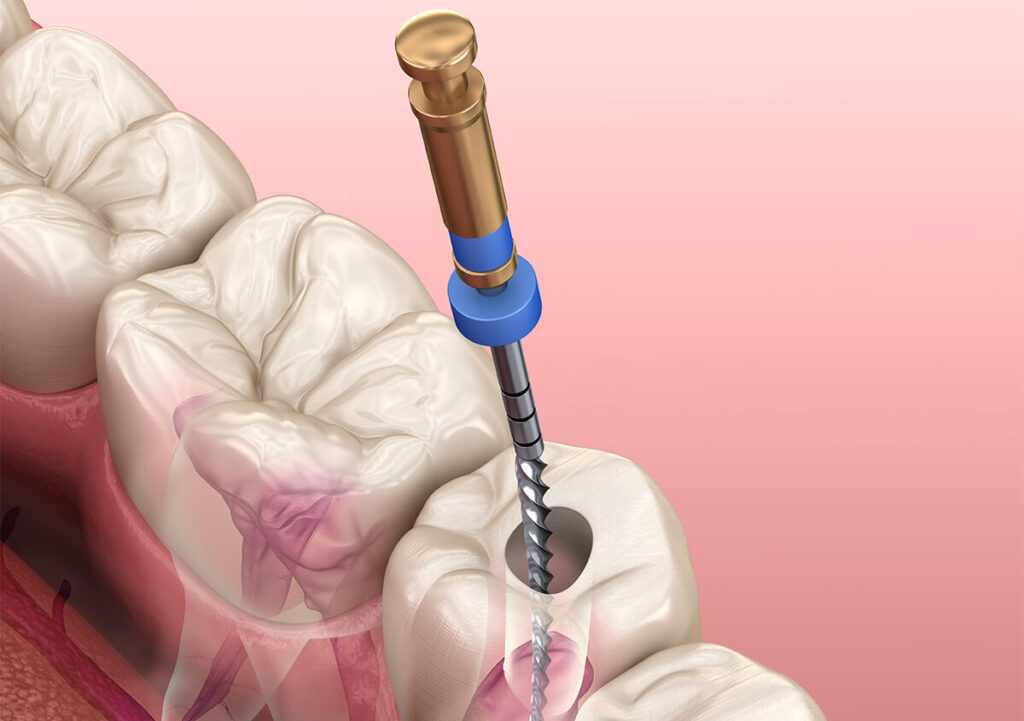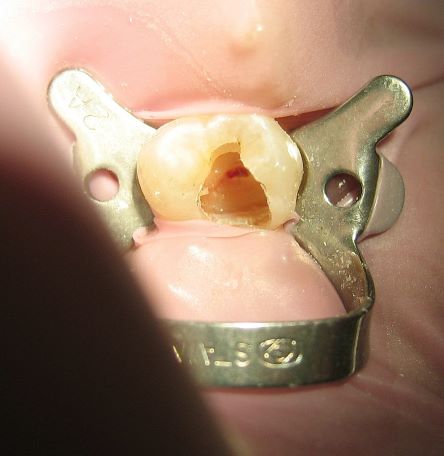Root canal treatment is a vital procedure that many individuals require to salvage their natural teeth. However, performing root canal treatment requires specialized skills and knowledge that not all dentists possess. This is where endodontists come in. Endodontists are dental specialists who have undergone additional training in diagnosing and treating diseases and injuries of the dental pulp and surrounding tissues. Collaborating with endodontic partners can lead to excellent root canal treatment outcomes.
Collaborative care between general dentists and endodontic partners has numerous benefits for patients seeking root canal treatment. By working together, both parties can utilize their unique skill sets to provide exceptional patient care. General dentists can diagnose the need for root canal therapy, while endodontic partners can perform the procedure with precision and expertise. Additionally, collaborating allows for a seamless transfer of information between providers, ensuring comprehensive patient care from start to finish. The result is improved patient outcomes through a team approach to dental healthcare delivery.
The Importance of Skilled Endodontists

Proficiency in endodontic procedures is a crucial factor for ensuring successful root canal treatment outcomes, thereby highlighting the significance of skilled endodontists in clinical practice. Endodontics is a specialized field of dentistry that focuses on the diagnosis and treatment of dental pulp-related problems. To become an endodontist, one must complete additional training and education beyond general dentistry. This includes two to three years of advanced coursework in endodontics, which covers the latest techniques and technologies used to diagnose and treat complex cases.
Patient satisfaction is another important aspect that underscores the importance of skilled endodontists. Patient comfort during treatment, as well as long-term success rates, depend largely on the skill level of the treating clinician. Skilled endodontists can provide patients with accurate diagnoses, effective pain management strategies, and predictable outcomes. They also use state-of-the-art equipment such as digital radiography and microscopes to ensure optimal results for their patients. Ultimately, investing in skilled endodontists ensures better outcomes for patients undergoing root canal treatments while contributing positively to overall oral health care delivery systems.
The Benefits of Collaborative Care
The advantages of working together in healthcare are numerous and can lead to improved patient outcomes. In endodontics, a team approach between the endodontist and referring dentist can result in better root canal treatment outcomes for patients. Collaboration allows for a more comprehensive approach to diagnosing and treating dental problems that require endodontic intervention.
By working together, the endodontist and referring dentist can share information about the patient’s medical history, medications, and other relevant factors that may impact their dental health. This collaboration ensures that all parties involved have a complete understanding of the patient’s situation, allowing them to tailor treatment plans accordingly. Additionally, close collaboration between these professionals helps to promote continuity of care throughout the treatment process by ensuring proper follow-up care is provided after procedures are completed. Ultimately, this team approach results in better communication among healthcare providers leading to an enhanced standard of care and improved patient outcomes.
In conclusion, collaborative care in endodontics has numerous benefits for both patients and healthcare providers alike. By working together closely, endodontists and referring dentists can provide higher-quality root canal treatments that are tailored to each individual patient’s needs. The ultimate goal is always achieving optimal dental health outcomes for patients through teamwork-based approaches that foster excellent communication between professionals across different specialties within healthcare systems.
Advanced Technology and Techniques
Innovative technology and techniques have brought about significant advancements in endodontic treatment, enabling dental professionals to provide more precise and efficient interventions for patients. One such example is the use of innovative equipment like cone beam computed tomography (CBCT), which provides a three-dimensional image of teeth and surrounding structures with high accuracy. This technology allows dentists to identify difficult-to-see anatomical features that may lead to complications during root canal treatment, such as additional canals or complex root configurations.
Modern approaches to endodontic treatment also include minimally invasive techniques like rotary instrumentation and digital imaging systems that enable more accurate diagnosis, faster procedures, and better patient outcomes. With these advances in technology and techniques, dental professionals can deliver excellent care while minimizing discomfort and recovery time for patients. Collaborating with partners who specialize in different areas of endodontics can help further enhance the application of these advanced technologies by sharing knowledge, expertise, and experience.
Overall, the integration of innovative equipment and modern approaches into endodontic care has transformed how dental professionals approach complex oral health issues. Collaboration among experts across disciplines further strengthens this approach by providing a comprehensive understanding of all aspects related to successful treatment outcomes for patients with diverse needs. These developments are helping make root canal treatments more accessible, affordable, comfortable, and successful than ever before.
Exceptional Root Canal Treatment

Achieving optimal results in endodontic interventions requires a multifaceted approach that takes into account various factors related to the patient’s unique needs and circumstances. Exceptional root canal treatment involves not only the technical skills of the dentist but also their ability to communicate effectively with patients, manage their expectations, and ensure their comfort throughout the procedure. In addition, using advanced technology and techniques can contribute to better outcomes in terms of patient satisfaction, long-term success rates, and reduced risk of complications.
To achieve exceptional root canal treatment outcomes, dentists must prioritize patient-centered care and take a holistic approach to treatment planning. This includes considering factors such as the patient’s medical history, oral health status, pain tolerance levels, and personal preferences when developing a customized treatment plan. Moreover, follow-up care is essential for ensuring long-term success rates by monitoring the healing process and addressing any potential complications promptly. By focusing on these key aspects of endodontic practice, endodontic partners can collaborate effectively to deliver outstanding results for their patients while maintaining high standards of professional excellence.
Frequently Asked Questions
What are the most common reasons for needing a root canal?
Root canal treatment is commonly required due to tooth decay and trauma. These causes can lead to inflammation or infection in the tooth’s pulp, which must be removed through root canal therapy to prevent further damage or tooth loss.
How long does a root canal procedure typically take?
The duration of a root canal procedure varies depending on the complexity and number of canals involved but typically takes 1-2 hours. The effectiveness of anesthesia plays a significant role in ensuring patient comfort during the procedure.
Is there a way to prevent the need for a root canal?
Preventive measures such as good oral hygiene, regular dental check-ups, and a healthy diet can reduce the risk of needing a root canal. Alternative treatments such as fillings and crowns may also be used to prevent further decay and infection.
Can I eat normally after a root canal procedure?
After a root canal procedure, post-treatment care is crucial to ensure proper healing. Patients may resume normal eating habits but should avoid hard or sticky foods until the tooth has fully healed.
Are there any potential complications or risks associated with root canal treatment?
Root canal treatment is generally successful, with success rates ranging from 86-98%. However, in some cases, root canal retreatment may be necessary due to complications such as persistent infection or incomplete removal of the infected tissue.
Conclusion

Endodontic treatment is a highly specialized branch of dentistry that requires skilled professionals to perform root canal procedures. The success of such treatments depends on the expertise and knowledge of the endodontist who performs them. Collaborative care among endodontists and general dentists can improve patient outcomes by facilitating better communication and coordination during treatment planning. Additionally, advances in technology and techniques have greatly improved the accuracy and predictability of root canal procedures.
The benefits of collaborative care are many, including reduced treatment times, improved patient comfort, and increased success rates. Endodontic partners can work together to develop comprehensive treatment plans that address patients’ unique needs while minimizing the risks associated with these procedures. Advanced technology also plays a crucial role in successful root canal therapy, allowing for more precise diagnoses and treatments.
Overall, endodontic partners collaborate for excellence in root canal treatment, providing patients with exceptional care that ensures optimal results. The importance of skilled endodontists cannot be overstated as they play a critical role in preserving natural teeth while preventing further damage or decay from occurring. Through collaboration between specialists and technological advancements, patients can expect the highest level of care when undergoing root canal therapy.
